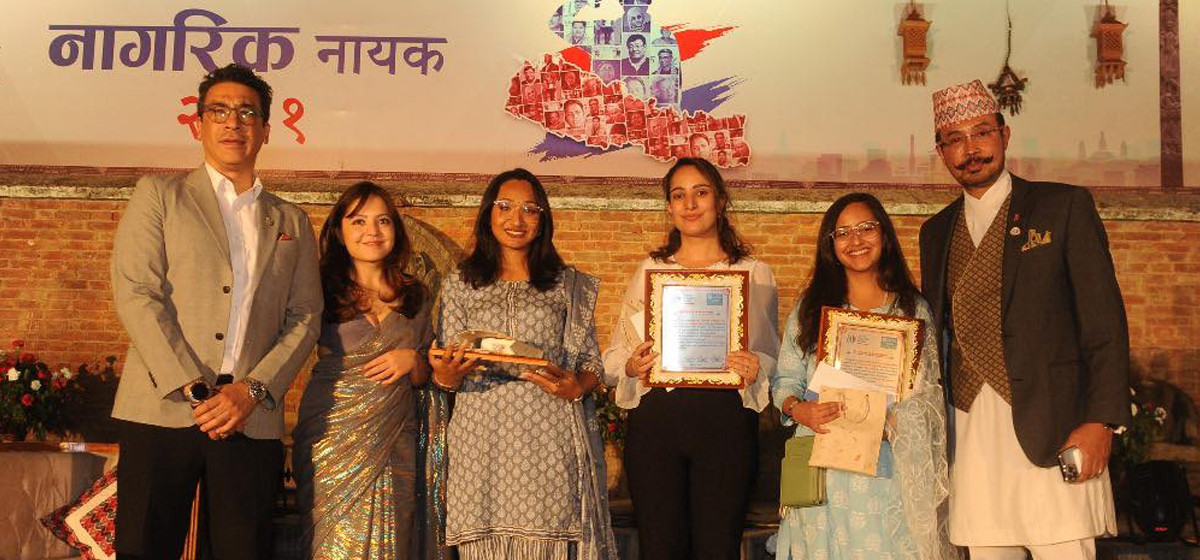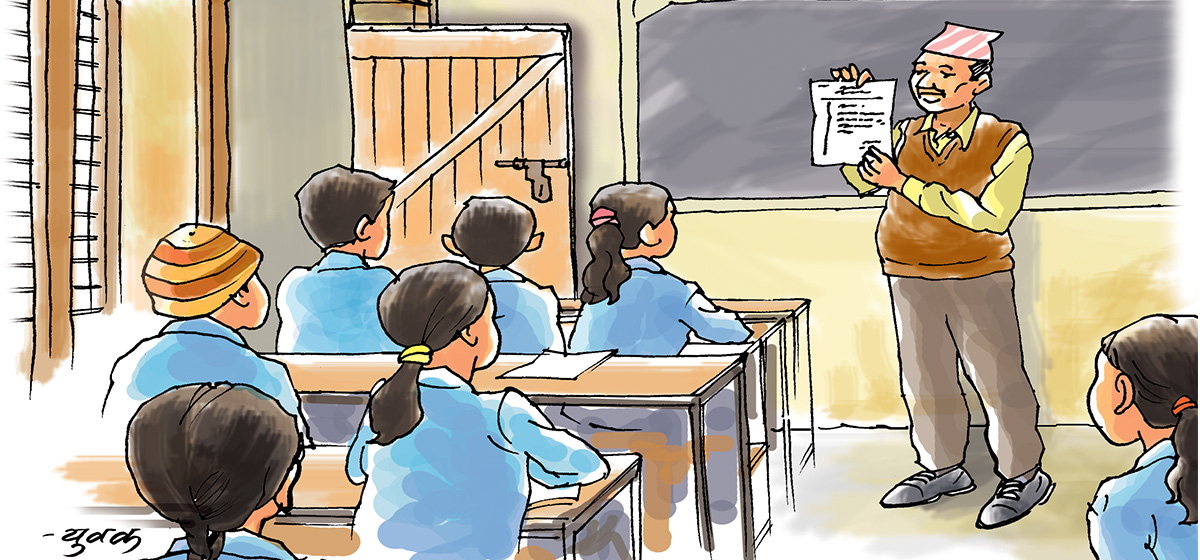
OR

The fashion industry, worldwide, has for years been a victim of piracy. Someone comes up with a concept and before you know it there are many inspired (read copied) versions of the same. And Nepal is no exception. An Instragram account titled Pride and Prabal has quite a few posts of creations by Nepali designers that look startlingly similar to gowns and dresses crafted by international fashion houses. Anweiti Upadhyay talks to a few people from the industry to find out what they have to say about this blatant rehash of ideas.
For those of you who haven’t stumbled upon it yet, there’s a page on Instagram that posts pictures of designs by big Nepali fashion houses or designers that resemble famous creations by international designers a little too much. The blatant rehash of ideas is all too obvious in the pictures posted on the page and, with over 6000 followers, Pride and Prabal is perhaps on a journey to make Nepali designers gain a conscience.
Pride and Prabal, on their Instagram page, claim to be inspired by Diet Prada created by Lindsey Schuyler and Tony Liu. Fashion enthusiasts around the world too have similar anonymous accounts. In India, there’s Diet Sabya where Indian designers copying other designer’s creations are called out. It seems getting ‘inspired’ isn’t new in the world of fashion. But will pages like these be anything more than voyeuristic pleasure for the audience or like Yubi Thapa says, “Does it serve any other purpose than trying to sabotage a designer’s career?”
Blogger and fashion influencer Rhea Pradhan thinks that because in today’s digital world we are exposed to a lot of information and ideas from all around the world, it’s actually very easy to get influenced by things you see on the internet, especially when it comes to creative industries like fashion. However, she says that even if someone is basing their designs on something that inspires them then they should, at the very least, bring their own twist to it. Her thoughts on this matter are mirrored by Sushila Karki, designer and founder of the accessories brand Meraki Hands and a graduate in Fashion Designing from Namuna College, who believes that since fashion is dictated by trends it’s difficult to stray away from what’s considered in at the moment. “And that inevitably leads to similar designs,” she says adding that doesn’t mean each designer isn’t able to interpret the same idea in his/her unique ways.
But model and photographer Sugam Singh thinks it all boils down to the fact that Nepali designers are lazy. “Designers are afraid to try new things because they aren’t certain that their customers will like it. So to be on the safe side, they remake what’s popular,” he says adding that this mindset will hamper their careers in the long run. Karki too agrees with Singh and says that she’s opposed to the idea of copying designs even if the design in question is a trend.
“Someone made it a trend. It’s unique,” she says adding that as designers one has to strive to create something new and make it a trend rather than follow set patterns. Karki mentions that she is constantly on the lookout for things that might inspire her next design but after she finds something she likes, she researches for hours about that particular design and only then designs and creates something of her own.
 Designer Tenzing Yangkyi believes that what Pride and Prabal is doing should be taken as a positive challenge by those involved in the fashion industry in Nepal. “Designers who have been copying someone else’s hard work have gotten away with it for far too long. Pride and Prabal could serve as a reminder that copying ideas isn’t creating. It’s a reality check some designers desperately need,” she says.
Designer Tenzing Yangkyi believes that what Pride and Prabal is doing should be taken as a positive challenge by those involved in the fashion industry in Nepal. “Designers who have been copying someone else’s hard work have gotten away with it for far too long. Pride and Prabal could serve as a reminder that copying ideas isn’t creating. It’s a reality check some designers desperately need,” she says.
However, Thapa claims that there really isn’t a term like copying in the fashion world as all designers, regardless of how original (or unoriginal) people might think they are, are always influenced and inspired by others’ creations. He also says that one shouldn’t judge too quickly and blame designers for making something that resembles another product put out by another designer. “In many cases, I have seen customers come to designers with a photo on their phones of a dress they saw that morning and demand they be made something like that,” he explains adding that because designers often don’t want to turn customers away, they simply comply and recreate the same thing for them.
Yangkyi, on the other hand, mentions that this is where designers should hold their moral ground. She says that as a designer, one’s main job is to draft new designs. If a customer has already done that part, then it’s better for both the customer and the designer if they head to a tailor who can bring those ideas to life at a much cheaper price. Yangkyi also mentions that she thinks both designers and customers are to blame for the creation and continuation of this issue as it is prevalent only through the combined – and somewhat unconscious and ignorant – collaboration of both parties.
Here Thapa adds that there have been instances when his own customers have come up to him to brag about how they gave out the photos of his designs to other tailors and designers to copy the style and that they paid a much lower price than what Thapa was charging for his creation. He states that he can’t really call out those dress makers for copying his own designs too since for most people fashion is a sector that bypasses the copyright claims because there is just so much creative freedom to create whatever you want to.
Not many, however, agree with Thapa’s reasoning. Makeup artist and fashion enthusiast Purnima Giri believes designers need to credit whoever came up with the original designs when they are basing their ideas on somebody else’s. Giri mentions that, at times, she too tries to recreate looks that other makeup artist’s came up with, but because she knows that a lot of effort and hard work went into that look she must credit the original creator in case she posts that recreation somewhere. “That is a win-win situation for both parties,” says Giri explaining that even the original creator will value this as they will see it as someone else celebrating their creations.
A quick look at the page Pride and Prabal on Instagram makes it obvious that there are Nepali designers who are simply copying someone else’s ideas and concepts and passing them off as their own. Pride and Prabal didn’t respond to The Week’s repeated requests for comment. Perhaps their need to remain anonymous stems from the fact that they have been receiving quite some flack for their work but we hope, like Yangkyi said, the work they are doing inspires a positive change in the fashion industry.
anweitiupadhyay@gmail.com
You May Like This

The world of Arts
Want to dabble in thangka painting but don’t know where to start? Or do you already have a knack for... Read More...

Rockets’ fashionable forward Tucker turns designer
“It’s a whole different process and it makes you look at clothing different when you actually see the process and... Read More...

Summer shoe fashion
Fashion is an art that glimmers to its maximum when complemented with matching accessories. Undoubtedly, the season puts fashion buffs... Read More...




Just In
- Prez Paudel solicits Qatar’s investment in Nepal’s water resources, agriculture and tourism sectors
- Fire destroys 700 hectares forest area in Myagdi
- Three youths awarded 'Creators Champions'
- King of Qatar to hold meeting with PM Dahal, preparations underway to sign six bilateral agreements
- Nepal's Seismic Struggle and Ongoing Recovery Dynamics
- Shrestha nominated as Chairman of NCC's Advisory Council
- Take necessary measures to ensure education for all children
- Nepalgunj ICP handed over to Nepal, to come into operation from May 8




_20240423174443.jpg)









Leave A Comment